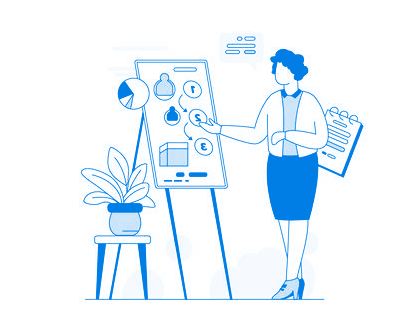What Is an Application Completion Rate?
In a highly competitive job market, the application process must be seamless and candidate-friendly. One critical hiring metric that often goes unnoticed is the application completion rate. This metric directly influences a company's ability to attract and retain top talent during the initial stage of the recruitment funnel.
A poor application completion rate could indicate a lengthy or complex application form, lack of mobile optimization, or unclear job descriptions. For HR teams and recruiters aiming to improve the candidate experience and conversion rates, tracking this metric provides valuable insights into where applicants are dropping off and what can be done to fix it.
It helps recruiters understand the effectiveness of their job application pages and provides clear feedback on how potential applicants are interacting with the careers portal or Applicant Tracking System (ATS).
How Is Application Completion Rate Calculated?
To calculate the application completion rate, you need two data points:
- The number of people who started the application.
- The count of individuals who finished filling out and submitting the application.
Formula
Application Completion Rate (%) = The percentage calculated by dividing the number of applications that have been completed by the number of applications that were started.
Example
If 500 people started applying for a role, and only 200 completed it, then:
Completion Rate = (200 / 500) × 100 = 40%
Tracking this metric over time helps HR teams identify patterns across job roles, locations, or departments and take steps to optimize the process.
Why Do Candidates Drop Off Before Completing Applications?
There are several reasons why applicants may start a job application but abandon it midway. These reasons may be tied to user experience, clarity of the job description, or even psychological factors.
Common Causes of Drop-Offs:
- Lengthy Application Forms: Excessive or redundant questions can cause applicants to lose interest.
- Non-Mobile-Friendly Interfaces: Many candidates apply from their phones. Poor mobile design leads to frustration.
- Login/Registration Requirements: Mandatory account creation before applying can be a significant barrier.
- Technical Issues: Errors during form submission or page loading delays result in abandonment.
- Lack of Clear Instructions: Confusing questions or poorly worded job descriptions reduce clarity.
- Perceived Complexity: If the process seems too demanding for an entry-level job, applicants may opt out.
By identifying and removing such friction points, recruiters can boost application completions significantly.
What Is a Good Application Completion Rate Benchmark?
There is no single benchmark for application completion rates, as it varies by industry, job type, and application method. However, industry studies and recruitment analytics suggest the following ranges:
| Industry | Average Completion Rate |
|---|---|
| Technology | 30%-45% |
| Retail & Hospitality | 45%-60% |
| Manufacturing | 40%-55% |
| Finance & Consulting | 35%-50% |
| Entry-Level/Internships | 50%-70% |
General Benchmark
A completion rate of 50% or above is typically considered healthy. Anything below 30% warrants immediate attention to improve user experience and streamline the application process.
These benchmarks should be viewed in context and compared over time within the same organization to spot trends or impacts of hiring strategy changes.
How Can We Improve Our Application Completion Rate?
Improving your application completion rate involves optimizing the candidate journey from the moment they land on your job page to the final submission step. Best Practices to Boost Completion Rates:
Simplify the Application Form
Limit fields to essential information only. Use pre-filled data or resume parsing tools to reduce manual entry.
Enable Mobile-Friendly Applications
Ensure your careers site and forms are responsive and easy to complete on smartphones or tablets.
Avoid Mandatory Account Creation
Let candidates apply as guests to make the process smoother and easier.
Show a Progress Bar
Giving applicants a sense of how far they are in the process helps manage expectations and reduces drop-offs.
Provide Clear Instructions
Use concise and jargon-free language to guide candidates through the application.
Integrate with Applicant Tracking Systems (ATS)
Tools like Qandle's ATS help manage and streamline applications, track drop-offs, and analyze performance.
Test and Optimise
Conduct A/B testing with different application forms, button placements, or CTAs to see what improves user completion.
Follow Up with Incomplete Applicants
Send reminders or nudges to candidates who started but didn't complete the form, if appropriate and GDPR-compliant.
In today's candidate-driven market, even a minor issue in the application form can result in losing a qualified applicant. Investing in applicant-friendly design and streamlined workflows can significantly increase completions and improve hiring outcomes.
Qandle's Recruitment Management Software helps you track application completion rates, identify bottlenecks, and simplify the candidate journey all within one integrated platform. Book a free demo and start converting more candidates with data-backed recruitment decisions.


 Back to Glossary
Back to Glossary